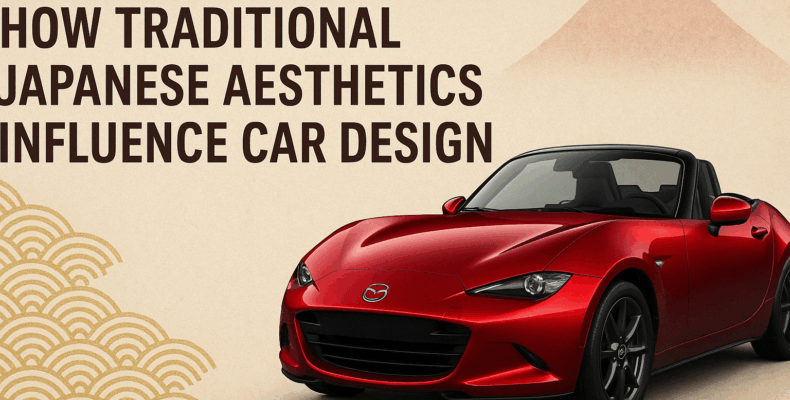Japanese car design is more than just engineering — it’s an art form. Rooted deeply in centuries-old cultural values, traditional Japanese aesthetics continue to shape modern car design in ways that are subtle, refined, and profoundly inspiring.
From “wabi-sabi” to “ma”, these philosophies have influenced everything from a vehicle’s exterior lines to the feel of its interior space. As a result, Japanese cars are not only admired for their reliability but also loved for their elegant simplicity and timeless beauty.
Let’s explore how these values are changing the way the world views automotive design — and why many international buyers are turning to Japanese used cars as not just practical purchases, but emotional investments.
1. Wabi-Sabi: Beauty in Imperfection and Simplicity
“Wabi-sabi” is the appreciation of imperfection, natural textures, and the passage of time. You can see this in car designs that avoid over-styling and instead focus on organic forms and subtle details.
For example, the Mazda MX-5 embraces simplicity with flowing lines and compact elegance. The design feels calm, uncluttered, and perfectly imperfect — making it an international favorite.
2. Ma: The Space Between Elements
“Ma” refers to the intentional space or pause between elements. In Japanese cars, this idea appears in clean cabin layouts, minimal dashboard clutter, and spacious-feeling interiors.
A great example is the Honda Fit, whose interior feels surprisingly large for a compact vehicle. This isn’t by chance — it’s the result of smart use of space, driven by the concept of “ma.”
3. Shibui: Subtle and Understated Beauty
“Shibui” represents an aesthetic that is simple, quiet, and elegant — yet rich with character. Japanese luxury cars like the Lexus LS or Toyota Crown reflect this style. Their designs are not flashy but still leave a lasting impression.
This type of beauty doesn’t scream for attention. Instead, it grows on you over time — a quality that appeals to those who value mature and meaningful design.
4. Kanso: Elimination of Clutter
Japanese car interiors often follow “Kanso,” which encourages removing the unnecessary. This results in intuitive layouts and peaceful driving environments. It’s a big reason why so many drivers around the world feel instantly at ease in Japanese cars.
5. Why Global Buyers Love These Aesthetic Values
Today, car buyers from Africa, the Caribbean, Europe, and beyond are looking for vehicles that combine function, beauty, and emotional value. Japanese cars deliver exactly that.
Not only are these cars built with care, but they also express a quiet confidence through their design. The result is a driving experience that is both practical and poetic.
And thanks to Japan’s world-class used car export industry, these beautifully designed vehicles are now available to customers all over the globe.
6. Top Japanese Used Car Exporters That Deliver These Works of Art
When searching for reliable and beautiful Japanese used cars, it’s important to work with trusted export professionals. These five Japan-based companies have earned global reputations for transparency, quality, and exceptional service:
-
🚗 SBT Co. Ltd.
-
🌍 Be Forward
-
📦 Qualitex Trading
-
🌐 Autorec Enterprise Ltd.
We’ve reviewed each of these companies in detail in this article:
👉 Top Recommended Japanese Used Car Export Companies for International Customers
7. Conclusion: Japanese Design Is More Than Looks — It’s a Philosophy
Ultimately, Japanese car design isn’t just about appearance. It’s a philosophy. Each line, curve, and space is carefully thought out. Each decision respects harmony, nature, and purpose.
This is why more and more people around the world are falling in love with Japanese vehicles — not just for what they do, but for how they feel.
So, whether you’re a first-time buyer or a seasoned collector, consider looking beyond the usual specs. Look for the beauty that lies in silence, space, and simplicity — the beauty of Japanese design.
